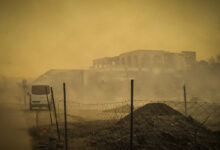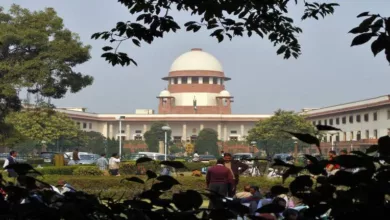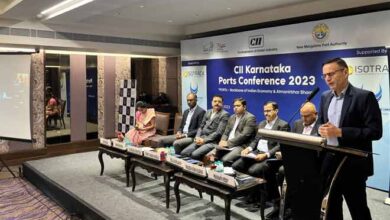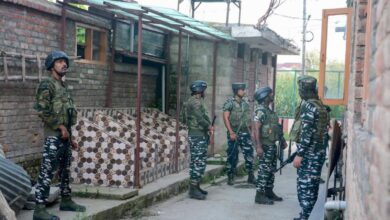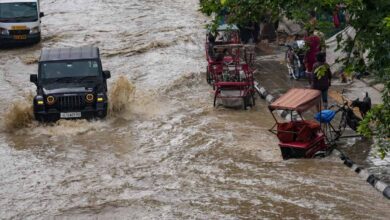Delhi floods: Arvind Kejriwal visits ITO, seeks help from Army, NDRF

Delhi floods: Arvind Kejriwal visits ITO, seeks help from Army, NDRF
After reaching a record high of 208.66 meters on Thursday, the water level in the Yamuna river has slightly receded to 208.4 meters on Friday. The Central Water Commission has forecasted a gradual decrease in the water level in the upcoming hours, although the decline is expected to be slow.
In response to the situation, Delhi Chief Minister Arvind Kejriwal visited several affected areas in the capital, including Vikas Bhawan and ITO, where a drain regulator was damaged. The Chief Minister acknowledged that water had entered various parts of Delhi due to different factors.

High water levels in the Yamuna river and subsequent flooding in certain areas of Delhi is a matter of concern for the local administration. It requires coordinated efforts from government agencies, authorities, and the community to address the challenges posed by flooding and ensure the safety and well-being of affected residents.
Monitoring and managing river water levels and implementing measures to mitigate the impact of floods are crucial aspects of disaster management. Authorities must remain vigilant and take necessary steps to protect vulnerable areas, assist affected individuals, and restore normalcy as soon as possible.
Residents should stay updated on official announcements, follow safety instructions, and cooperate with local authorities during such situations.
In response to the breach of the drain regulator at ITO and the resulting flooding in the area, Delhi Chief Minister Arvind Kejriwal took action by directing the Chief Secretary to seek assistance from the Indian Army and the National Disaster Response Force (NDRF) to address the situation.
Kejriwal’s tweet highlights the urgency in fixing the breach and mitigating the flooding in ITO and its surrounding areas. Seeking the support of the Indian Army and the NDRF indicates the seriousness of the situation and the need for specialized expertise and resources to resolve the issue.
Collaborating with these agencies can help expedite the repair work, control the flooding, and ensure the safety of the affected areas. The Indian Army and the NDRF are well-equipped to handle emergencies and provide the necessary assistance in dealing with such incidents.

The local administration must work swiftly and efficiently to address the breach, restore the drain regulator, and implement measures to prevent further flooding. The involvement of the Indian Army and the NDRF underscores the government’s commitment to resolving the issue promptly and minimizing the impact on the affected areas and residents.
Regular updates from authorities and adherence to safety instructions are essential for residents in the affected areas. By working together and coordinating efforts, the government, local authorities, and relevant agencies can effectively tackle the situation and ensure the well-being of the people affected by the flooding.
Delhi Chief Minister Arvind Kejriwal took to Twitter to express concern about the flooding caused by the breach of a drain regulator, particularly in the ITO area and its surroundings. He highlighted the ongoing efforts of engineers who have been working tirelessly to address the issue throughout the night. Kejriwal emphasized the urgency of fixing the breach and called on the Chief Secretary to seek assistance from the Indian Army and the National Disaster Response Force (NDRF) to expedite the resolution.
As a result of the flooding, several areas in the city adjacent to the Yamuna River have been inundated with knee-deep water. In response to the situation, the authorities have taken proactive measures, including closing all schools and colleges until July 16. Additionally, the entry of heavy goods vehicles involved in non-essential activities has been restricted to minimize further complications.
The decision to close educational institutions aims to ensure the safety of students and staff in light of the challenging conditions caused by the flooding. Restricting the entry of heavy goods vehicles helps manage traffic and reduce potential damage to infrastructure and property.

The flooding in Delhi underscores the need for swift action and effective management of water resources, drainage systems, and flood control measures. The breach of the drain regulator has led to localized flooding, requiring a comprehensive response from authorities and relevant agencies.
By seeking assistance from the Indian Army and the NDRF, the government demonstrates its commitment to resolving the situation promptly and efficiently. These agencies possess the expertise, resources, and experience to handle emergencies and provide the necessary support in dealing with such incidents.
Residents should remain vigilant, follow instructions from local authorities, and prioritize their safety during this period of flooding. Regular updates from the government and relevant agencies can help residents stay informed and take necessary precautions.
Efforts to repair the breach, alleviate flooding, and restore normalcy should continue with a focus on minimizing inconvenience to residents and ensuring the well-being of those affected. Collaborative efforts between the government, local authorities, and the assistance of specialized agencies are crucial to manage and mitigate the impact of the flooding effectively.In response to the increased water level in the Yamuna River and the resulting impact on traffic movement, the Delhi Traffic Police issued an advisory to address the situation. The advisory aimed to manage traffic and minimize disruptions caused by the flooding.
As a part of the measures, the movement of commercial vehicles was restricted, and non-destined cars were not allowed to enter the city. This restriction helps prevent unnecessary congestion and ensures that only essential cars are on the roads during challenging conditions.
Furthermore, the Delhi Traffic Police redirected other commercial vehicles to alternative routes to maintain smooth traffic flow and avoid disruptions. Diverting commercial vehicles helps reduce the likelihood of congestion and ensures that traffic moves efficiently, minimizing inconvenience to commuters.
The advisory by the Delhi Traffic Police reflects the proactive approach taken by authorities to manage the impact of the flooding on traffic movement. By implementing these measures, they aim to ensure the safety of road users, minimize congestion, and maintain the overall functioning of the city’s transportation system.
Residents and commuters are advised to stay updated on traffic advisories, follow instructions from the Delhi Traffic Police, and plan their journeys accordingly. Cooperation from the public in adhering to the traffic guidelines and being patient during these challenging circumstances is crucial for the smooth operation of traffic management efforts.
Efficient traffic management plays a vital role in mitigating disruptions caused by natural events like flooding. Authorities will continue to monitor the situation, provide updates, and take necessary measures to facilitate the movement of essential vehicles and maintain traffic flow until conditions improve.

